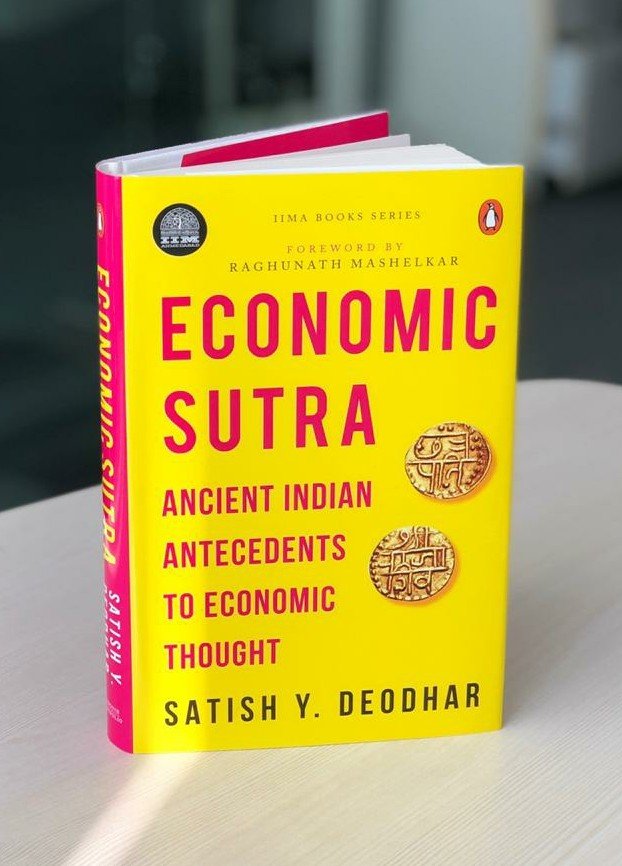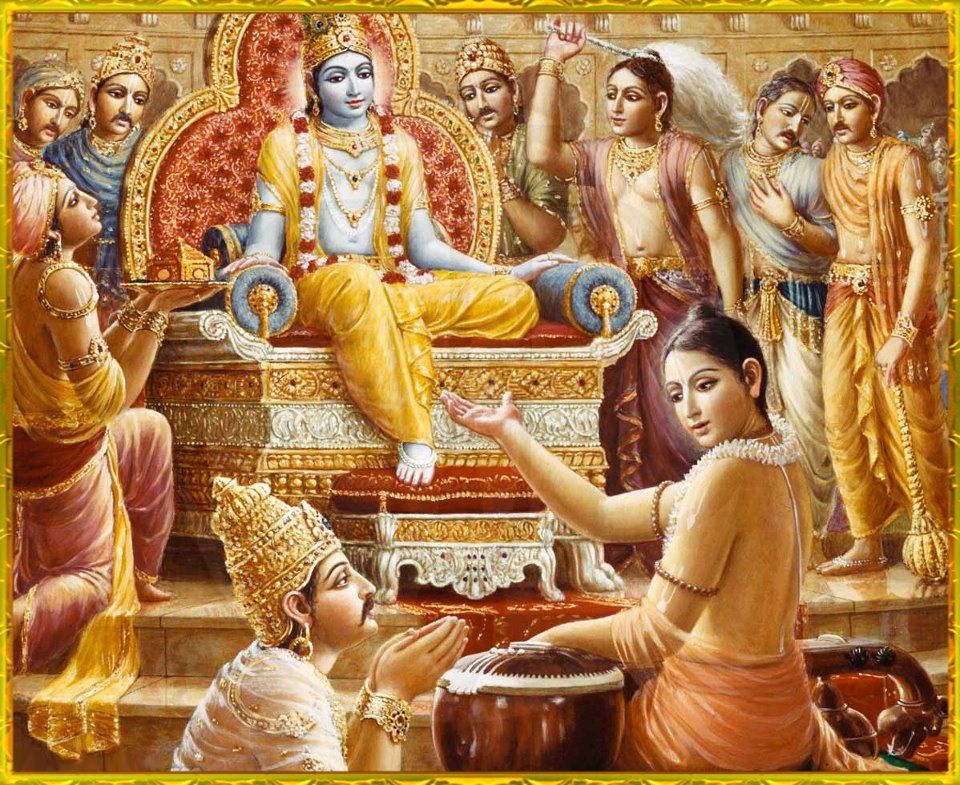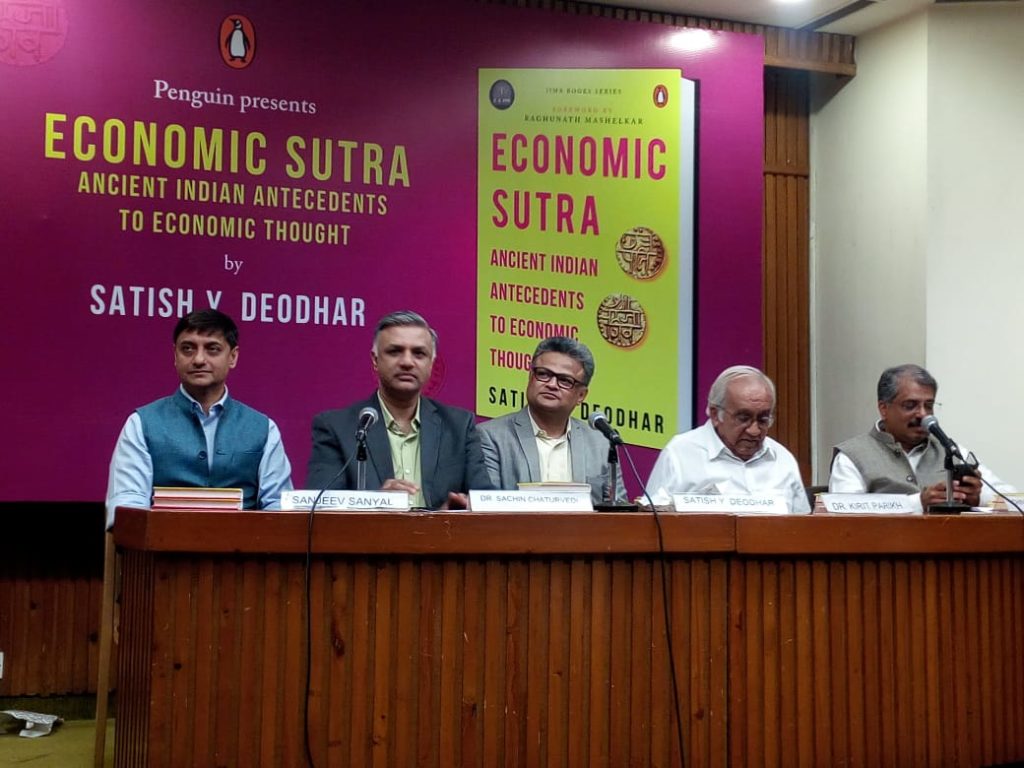- Visitor:66
- Published on:
Book review on Economic Sutra: Ancient Indian Antecedents to Economic Thought by Satish Y Deodhar
Considering the governance and lifestyle and evaluating the Indian and Western approaches and contributions, the overall analysis makes an easy-to-understand contrast between both the ancient and modern eras. Providing examples such as how Indian economic theory encompasses the holistic human endeavor towards the Purusharthas, the author is inspired by the Vedic cult to explain various practices that are implemented in economic sutras.

The work of Satish Y Deodhar is extremely insightful and can help every Indic enthusiast and even common Indians to understand details of the past, behind all the economic thoughts, activities and policies we see around us today. The ancient ideas and practices existing for millennia and centuries on this land are explored in depth that has eventually given rise to the conditions we live in at present. Considering the governance and lifestyle and evaluating the Indian and Western approaches and contributions, the overall analysis makes an easy-to-understand contrast between both the ancient and modern eras. Providing examples such as how Indian economic theory encompasses the holistic human endeavor towards the Purusharthas, the author is inspired by the Vedic cult to explain various practices that are implemented in economic sutras. Lastly, Satish Y Deodhar presents to us the postulates of Kautilya with a cursory look, linking elements of Arthashastra with more ancient ideas which is at present the beginning point for most of the learners and researchers of today in this field.
The author introduces to us all the necessary basic scriptures and pieces of literature existing from the Sindhu-Saraswati civilization. These valuable resources of mankind are generated from the Hindu minds who in many cases asked questions and preferred doubt apart from just believing in a specific “ism” coming from both theistic and non-theistic traditions. Highlighting the specialties of Indus Valley economic culture, the author shows how India maintained this advanced level of continuity and progress through the Vedic era that finds few parallels elsewhere, till she gained the share of one-third to half of the total world GDP, tasting the flavor of peak during the golden age of Gupta period.
The reflections on economic thoughts of the ancients are evaluated further in this book like the urge of fulfilling material desires and the concept of debt or “rna” and repayment from Rig Veda, significance of money and wealth from Panchatantra and Thirukkural, capital as the input to create more wealth from the Mahabharata, expressing interest in percent terms in Panini’s work.

Further, he reminds us of Goddess Lakshmi as a symbol of progress in terms of wealth and prosperity in Hindu culture. The writer also discusses how Indians have been always concerned about balancing between worldly goals of householder life and spiritual life as seen in Isha Upanishad, Bhakti cult, Digha Nikaya and the terms like abhyudaya (prosperity in this world) and nihsreyasa (eternal bliss) as explained by Sage Kanada in Vaisheshika Sutra. Above all, he analyzes from the concept of obeying Purusharthas that the ancients were never discouraged to fulfill their material desires and attain the good in life. However, not just accumulating wealth, but also circulating that within the society was seen as important since the Vedic times. For example, we find the concept of daana or charity as defined in the Bhagavat Gita. Also, bargaining and estimating selling and cost prices were performed from ancient times, done in terms of the number of cows or metallic currency or hiranyapind, gold coins called nishkas, silver and copper coins called karshapana. Moreover, tax and tax revenue were very generic terms in the society and the type of tax policies to be imposed and in what manner were well defined.

The state and the king were highly responsible for market facilitation and public works as evident from the conversation between Sage Narada and Yudhisthira in Mahabharata. Also, making donations and land grants or assigning village revenues were considered important. Here, the ideas of micro and macro perspectives or detailed and broader views on economics seem to have evolved by then as clear from the terms sukshma drushti and amal pradnya. The various republics derived their economic power through the association of professionals known as shreni, sangha, nikaya and nigama, performing manufacturing and trading activities within and among the republics. It must be reminded that the idea of Eminent Domain and its right by the kings was not there in India and though cultivated individually the land was never a wealth and above all, treated as a goddess. The land as the fundamental right was called by the name Vashudha and Vasundhara i.e. wealth-producing and wealth holding and not wealth. Thus, the 2nd-century lawmaker Narada has clearly pointed out what today Karl Marx (whom the author has clearly proved to be an intellectual, not foreteller) has referred to as ‘locus standi’ and ‘field of activity for labourers. Coronations of the kings were just to offer the sovereignty of the people for the service of common man. This was performed by ratnis of representatives of people what we call in the current economic terminology as the upholding of social contract theory. Moreover, as any agricultural land suffered due to the king’s actions, compensation for the losses had to be done. This is seen till the pre-colonial era. For example, while Maratha-Peshwa period was going on, paimalli system was there as any such land was hampered due to intrusion of army. However, the issue of land acquisition started during the British rule as the principle of Eminent Domain was set down within the land acquisition act.
Quoting from the Purushasukta, Gita, Vajrasuchi an Upanishad and Mahabharata and even from Amberdkar, Satish Y Deodhar reminds us that our society was surely divided into various varnas, but this was not based on hierarchy but as per efficiency. Beyond, this the scriptures have asked people to go for once Swadharma or the character that ultimately and uniquely identifies one’s self when it comes to confusion between Dharmik preferences. In this context, the author narrates to us what actually is meant by “Brahmin” in our scriptures and shows that social mobility as the function of economic growth was absolutely there that rose to an extreme during the Golden Age of the Guptas. Again, he reminds us that social structure in the name of varna jati was horizontally structured and not vertical or stratified in a pyramid structure. Till today it is flexible in terms of occupational diversity and social mobility. It is witnessed for a prolonged time that the varna system of India has been inclined towards a more endogamous jati system. Here, the writer provides us with very useful examples where mobility and respect were maintained across these different social structures. Even, social reformers emerged from the Hindu communities as saints and poets challenging the system. However, in any case, slavery was neither there in India nor ever thought of. Nevertheless, Buddhism and Jainism were responsible for decaying and degrading of this well-organized independent structure that came through their prohibition of various business activities taking one away from spiritual journey and tilling of soil as this can kill animals. Thus the position of many occupations now got demoted and eventually disrespected. Also, the spirit of the Kshatriyas also declined that resulted into foreign rule. The author ends the chapter reminding and awaking us, that we must come forward and accomplish many tasks that have hindered our flow and understanding of society by taking measures like universal access to education, basic healthcare and so on.

In the next 2 chapters, Satish Y Deodhar highlights only Kautilya and explored his great work- the Arthashastra. His treatise is more academic and universal and no particular mention of the historical situation can be found here. In his lifetime, he worked as an adviser to Chandragupta Muarya. His presence in Indian history cannot be understood without realizing the position of India at that time. Apart from maintaining a strong bond with the Mesopotamians and extensively with Greco-Romans, India was also in connection with South Eastern countries at that time. It was India where high carbon wootz and coats of chain mail were produced. Moreover, Bharat reached its peak in terms of philosophy, arts, metallurgy, mathematics and grammar divided into 16 Janapadas united by Dharma. In Arthashastra, Kautilya has culminated various elements of economic thoughts existing over the millennia. Here, Kautilya never forgets to mention many previous personalities who had immense contributions in this field till the Rig-Vedic times. For example, several mentions of Brihaspati, Usanas, Parashara, Vishalaksha and Vatavyadhi can be found here. Having a spiritual platform and implementing reasoning, he synergized economic well-being and political administration in his book. Also, he reminds us about the importance of both ecological balance and socio-economic foundation in Arthashastra. In his view accumulation of material wealth or artha is essential, but at the same time also recognized dharma, kama and moksha, since the others can not be achieved without having a basic source of livelihood. In this context, the author further elaborates on the idea of Dharma in Indian society and its connection with self-interest.

Regarding the provision of public goods, Kautilya sanctioned provisions in different areas like building tanks, dams, roads, waterways and irrigation canals. Also, he prescribed that no indiscriminate and unsustainable exploitation would be done to natural resources through implementing leasing rights on non-agricultural lands and forest areas. Also, people who need help like the one in distress, distress, women with no children and aged persons are to be taken care of by the state. Ranging from agriculture to zoological parks, he listed the revenue of sources. Next, Satish Y Deodhar highlights sources of tax revenue and types of taxes and prices mentioned by him to generate revenue from those sources. Further, the author analyzes Kautilya’s plan for institutional mechanisms for market facilitation. From his observation, Satish Y Deodhar points out his knowledge regarding demand and supply forces and relative scarcity. Also, the author has noticed his view on weights and measures, specifications for metal contents of coins and the strict punishments for their violations that indicate asymmetric information among market participants. Moreover, he supported free trade and if not completely free trade and considered loans and interest rates as a means of accessing capital. Also, he had a fair knowledge of equivalents of minimum wage for unskilled labor working in various areas. He keenly observed the goods auctioned at markets which provides a glimpse of his understanding of demand and supply forces and relative scarcity. Then, the author proves that Kautilya supported a state-dominated economy and wanted a socialist welfare state as his understanding of political statecraft and provision of goods with market failure characteristics are analyzed. Moreover, his thorough knowledge regarding prices, cost, domestic markets and foreign trade were ahead of his times. Also, the writer mentions that apart from the states minting their own coins in the name of kosha praveshyam, various guilds and silversmith were also provided with the authority to mint and these coins were known as vyavaharikim. After that, trade surplus happening with India Greece and Rome is highlighted by the author. Besides, Kautilya recognized capital to be vital input to generate more wealth and also proposed that capital is essential to gather more capital. He also possessed a fair idea of the equivalents of minimum wage for unskilled labor and mandated no slavery. In this context, the author provides a picture of vibrancy of jurisprudence and credit market during that period.
Thus, the way in which the book clearly presents to us the truth of how ancient Bharat was way ahead of other countries in terms of business and economy is useful for every student and citizen. Also, the author makes a comprehensive difference between ancient Indian economic thought based on the purusharthas and modern western system based on the search for material wealth and pleasures. Expanding the reader’s intellectual interest, the whole research opens our eyes unfolding the suppressed and lesser-known areas that are also yet to be researched, during the time when biased by modern Western eyes we also tend to reject those ideas considering them to be outdated.
Bibliography:
Deodhar, S.Y., 2019. IIMA-Economic Sutra: Ancient Indian Antecedents to Economic Thought. Penguin Random House India Private Limited.
Center for Indic Studies is now on Telegram. For regular updates on Indic Varta, Indic Talks and Indic Courses at CIS, please subscribe to our telegram channel !
- 33 min read
- 0
- 0










